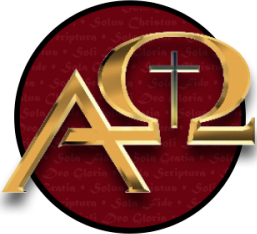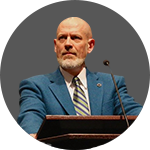I admit that I’ve never had a high view of Mark Shea’s scholarship, yet a mixture of surprise and amusement washed over me as I took in Shea’s breathtakingly ignorant response to a reader’s question regarding Augustine and Sola Scriptura. A reader had pointed out to Shea that Augustine, in responding to the Arian heretic Maximinus, had sounded exactly like a Sola Scriptura Christian.
Augustine (354-430 AD):
The Father and the Son are, then, of one and the same substance. This is the meaning of that “homoousios” that was confirmed against the Arian heretics in the Council of Nicaea by the Catholic fathers with the authority of the truth and the truth of authority. Afterward, in the Council of Ariminum it was understood less than it should have been because of the novelty of the word, even though the ancient faith had given rise to it. There the impiety of the heretics under the heretical Emperor Constantius tried to weaken its force, when many were deceived by the fraudulence of a few. But not long after that, the freedom of the Catholic faith prevailed, and after the meaning of the word was understood as it should be, that “homoousios” was defended far and wide by the soundness of the Catholic faith. After all, what does “homoousios” mean but “of one and the same substance”? What does “homoousios” mean, I ask, but the Father and I are one (Jn 10:30)? I should not, however, introduce the Council of Nicaea to prejudice the case in my favor, nor should you introduce the Council of Ariminum that way. I am not bound by the authority of Ariminum, and you are not bound by that of Nicaea. By the authority of the scriptures that are not the property of anyone, but the common witnesses for both of us, let position do battle with position, case with case, reason with reason.
John E. Rotelle, O.S.A., ed., The Works of Saint Augustine, Part 1, Vol. 18, trans. Roland J. Teske, S.J., Answer to Maximinus, Book II, XIV – On the Sameness of Substance in the Trinity, Section 3 (New York: New City Press, 1995), pp. 281-82.
Shea responded: “What Augustine is doing is appealing to a common authority in a dispute where the Church Universal has not yet arrived at a consensus.”
Perhaps a little background would be helpful here. Maximinus was an Arian. The question was whether the Father and the Son are consubstantial. This is a matter that was directly addressed by the Council of Nicaea. We can agree with Shea in a limited way, namely that the Council of Nicaea was not ecumenical in the sense of speaking for every person who professed to be a part of the Christian faith: after all, it condemned the Arians. By that standard, there have not been any ecumenical councils, ever. If that’s Shea’s position, he’s at loggerheads with Rome.
Judging Nicaea by modern Roman standards, though, Nicaea did not just “arrive at a consensus” but actually defined dogma that must be accepted de fide. That’s obviously not how Augustine judged Nicaea, but that’s because Augustine didn’t share the epistemology of modern Rome.
Shea continued: “The councils he is referring to are local synods.”
Augustine refers to two councils: Ariminum and Nicaea. Neither was a “local synod.” Ariminum and Nicaea were both massive councils involving hundreds of bishops. Nicaea is typically identified by Rome as the “First Ecumenical Council.” The Arians viewed Ariminum as having similar weight, given its similar size in terms of number of bishops. Perhaps Shea would not want to call Ariminum an “ecumenical council,” but he must at a minimum acknowledge it to be a regional council. On the other hand, it is only out of ignorance that Shea can claim that Nicaea is a “local synod.” Nicaea was dominated by Eastern bishops, to be sure, but again it is minimally a regional synod, and Shea’s own church declares it to be an ecumenical synod.
Shea again: “He regards himself as bound by the teaching and discipline of the synod whose jurisdiction is over his local geographic region, and the person he is writing to likewise feels bound by his local synod.”
Maximinus was the Arian bishop of Hippo (see Dictionary of Christian Biography and Literature). Augustine was the orthodox (“catholic” but not “Catholic”) bishop of Hippo, as everyone knows. Even if the two councils mentioned were “local” councils, or even regional councils, both Augustine and Maximinus were in the same locale and region. Thus, this is the sort of impossible explanation for Augustine’s words that can only come out of gross ignorance of the people involved in the dispute.
Shea again: “With Augustine’s particular question the issue is this, lacking a verdict from the Church universal, and faced with differing rulings from different local councils, he is attempting to come to concensus [sic] by appeal to Scripture, since it is an authority appealed to by both him and his correspondent.”
This is basically the same debunked theory we’ve already addressed above.
Shea once more: “But (getting back to your question) the point is this: Augustine is attempting “preserve the unity of the Spirit in the bond of peace” in a particular discussion centering different juridical differences between two local councils.”
Leaving aside Shea’s continued nonsense about these councils being “local,” who knows what Shea is trying to say with his garbled phrasing, ” … in a particular discussion centering different juridical differences … .” Perhaps “different” should be “on.” But the issue in question is whether Father and Son are consubstantial. That can hardly be characterized as primarily a juridical question.
Shea continues: “Since the Church universal has not addressed the matter via either an ecumenical council, nor via the Holy Father, he appeals to the authority that both he and his correspondent hold in common: Scripture.”
This can only be true if no bishop of Rome had weighed in on the Arian controversy, and if Nicaea is not an ecumenical council. Surely Shea would not be so brash as to try to assert those things. So, actually, what Shea is saying is really more a reflection on the fact that Augustine does not consider the bishop of Rome’s comments or the comments of Nicaea to be of equal authority with Scripture, or even to be binding on the Arian bishop with whom he’s dealing.
Shea again: “He is not trying to make any point at all about sola but is, instead, assuming a thoroughly Catholic backdrop to the whole discussion.”
So now Arianism is “thoroughly Catholic” and so is Maximinus’ rejection of Nicaea!?! Of course, that conclusion would assume that Shea actually had the foggiest clue about what Augustine and Maximinus were discussing. He doesn’t. Instead, he offers his comment from the foundation of dogmatic affirmation of whatever Rome says and ignorance of the fathers.
Shea once more: “Be careful of importing post-Reformation categories into patristic arguments.”
That’s actually good advice. It’s not particularly relevant advice, but it is good advice. We should be on guard against anachronism. But in this case, it is clear where the anachronism lies: it lies on the one trying to turn Augustine into a modern Roman Catholic.
While it might be instructive to consider in detail the absurdity of comparing the Arian controversy (as Shea does – see his post) to the controversy over when to celebrate Easter or the question of whether to fast on Saturdays in Milan and in Rome, I’ll simply let the reader decide whether even by modern Roman standards those issues would be deemed disciplinary or dogmatic.
To sum up, no, Mr. Shea, Nicaea wasn’t a local council. Nevertheless, Augustine did not view Nicaea as binding on Arian bishops such as Maximinus, but nevertheless appealed to the Scriptures as the alone Rule of Faith by which to settle the Arian controversy in Hippo.
-TurretinFan


